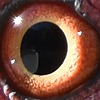HOME | DD
 TheBootesArtVoid — What Is That Humie Doin'? (Wild)
TheBootesArtVoid — What Is That Humie Doin'? (Wild)

#animal #animalphotography #animals #australia #australian #australiananimals #australianwildlife #bird #birds #cockatoo #natural #nature #naturephotography #parrot #parrots #photo #photography #wildlife #wildlifephotography #australianbirds #birdphotography #parrotbird #parrotlovers #wildlifereferencephoto #thebootesartvoid
Published: 2023-02-03 20:39:40 +0000 UTC; Views: 1395; Favourites: 99; Downloads: 0
Redirect to original
Description
Species Name: Little Corella
Species Latin Name: Cacatua Licmetis sanguinea
Other Known Names:
Short-billed Corella
Bare-eyed Cockatoo
Blood-stained Cockatoo
Little Cockatoo
Native To: Australia, Southern New Guinea
Conservation Status: Least Concern
Photo Taken At: My Frontyard
Size (length): 35cm-41cm (14-16inches)
Weight: 370-630 grams (13-22oz)
Lifespan: 20-80 years
Population Size: over 1,000,000
Sub Species Names:
long-billed Corella (Cacatua Licmetis tenuirostris)
Western Corella (Cacatua Licmetis pastinator)
Muirs Corella (Cacatua Licmetis pastinator pastinator)
Butlers Corella (Cacatua Licmetis pastinator butleri)
Red-vented Cockatoo (Cacatua Licmetis haematuropygia)
Tanimbar Corella (Cacatua Licmetis goffiniana)
Solomons Cockatoo (Cacatua Licmetis ducorpsii)
Description:
Little corellas are medium sized white birds with a plummage consisting nearly entirely of white feathers. The Little Corella has patches of pinkish-red between its eyes and around its beak and sometimes along the back of their head. They have a patch of wrinkled blue skin around their dark brown eyes. These birds have a light grey beak adnd dark grey feet with black talons/claws.
Diet: These birds will travel and feed in large noisy flocks and will generally feed on the ground. The most common forms of food for these birds are grains and grass seeds, these birds will also feed on some bulbs and fruits where available.
Behaviour: it is thought that these birds are monogamous and that they will tend to pair for life. As they tend to stick together in large flocks the flocks will also nest in tree hollows, cliff cavities, termite mounds. These nesting sites are generally used several years in a row by these flocks. It is not uncommon for multiple pairs in the flock to use the tree/cavity/mound but as it is believed that these birds are monogamous the pairs will only mate with their partner. Mating generally occurs during rainy periods between May to October.
The Little Corella's have a call that consists of high pitched notes ands creeches that are relatively similar to that of the Sulphur-crested Cockatoo. Large flocks will continue to make these calls which can be heard from several kilometres/miles away. Juvenile Little Corella's will become even louder when they engage with play. They will have conversations with one another with their calls, they will fly around as if to show off. The juveniles will also show off by hanging upside down on branches with their feet, beaks or both.
Further Reading (general information):
Wikipedia: Little corella - Wikipedia
Birdlife: Little Corella | BirdLife Australia
Animalia: Little corella - Facts, Diet, Habitat & Pictures on Animalia.bio
Australian Museum: Little Corella - The Australian Museum
Birdscoo: Little Corella Cockatoo Care Sheet | Birds Coo
World Life Expenctancy: LITTLE CORELLA LIFE EXPECTANCY (worldlifeexpectancy.com)
The Website Of Everything: Little Corella - Pictures and facts - Birds @ thewebsiteofeverything.com
Related content
Comments: 4

👍: 1 ⏩: 1

👍: 0 ⏩: 1

👍: 1 ⏩: 1

👍: 0 ⏩: 0


























